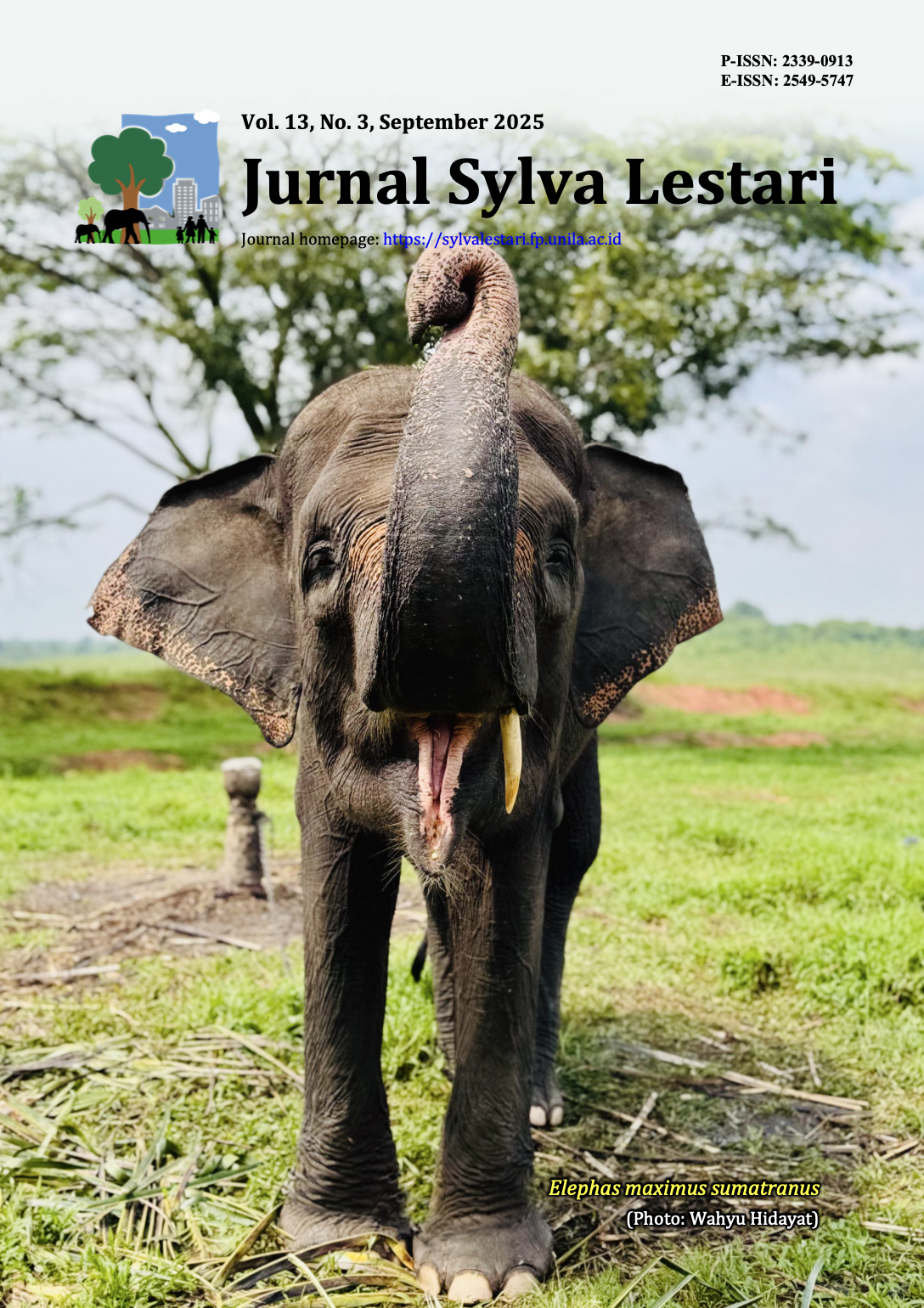Assessment of Mangrove Species Diversity in the Municipality of Nasipit, Agusan del Norte, Philippines
DOI:
https://doi.org/10.23960/jsl.v13i3.1192Abstract
Mangrove habitats are the most productive and biologically diverse ecosystems in the world. This study assessed the community structure of mangrove species in the two villages of Nasipit, Agusan del Norte, Philippines. There were 10 sampling quadrats with a size of 20 m × 20 m in Barangay (Village) Ata-atahon and Camagong. The data collected include taxonomic names, species diversity, and vegetation analysis. The results of the study revealed that Ata-atahon and Camagong fell under low diversity, as indicated by their Shannon-Wiener Index values of 1.091 and 0.873, respectively. The evenness index showed that Camagong has high evenness compared to Ata-atahon. Moreover, all species found in the two areas were listed as least concern based on the IUCN Red List for its conservation status. Both barangays being studied located at Nasipit, Agusan del Norte, fell under the low category due to anthropogenic activities. These results suggest the need for the rehabilitation and enrichment of the mangrove forest in Nasipit, Agusan del Norte, which could be led by the Department of Environment and Natural Resources in collaboration with the local government and non-governmental organizations. It is also strongly recommended to adopt preventive measures to prevent habitat loss.
Keywords: anthropogenic, conservation, dominance, species diversity, species importance value
Downloads
Downloads
Published
How to Cite
Issue
Section
Statistics
 Abstract views: 384 times
Abstract views: 384 times PDF downloaded: 272 times
PDF downloaded: 272 times
Metrics
License
Copyright (c) 2025 Rhea Lou Pulido, Elena Fe Casendac, Michael Jeff Rozano, Catherine Mhae Jandug, Liezel Obo, Jessa Marie Sabado, Marlon Elvira, Victor Corbita

This work is licensed under a Creative Commons Attribution-NonCommercial 4.0 International License.
Authors retain copyright and grant the journal right of first publication with the work simultaneously licensed under a Creative Commons Attribution-NonCommercial 4.0 Licence that allows others to share the work with an acknowledgement of the work's authorship and initial publication in this journal.
Authors are able to enter into separate, additional contractual arrangements for the non-exclusive distribution of the journal's published version of the work (e.g., post it to an institutional repository or publish it in a book), with an acknowledgement of its initial publication in this journal.
Authors are permitted and encouraged to post their work online (e.g., in institutional repositories or on their website) prior to and during the submission process, as it can lead to productive exchanges, as well as earlier and greater citation of published work (See The Effect of Open Access).









